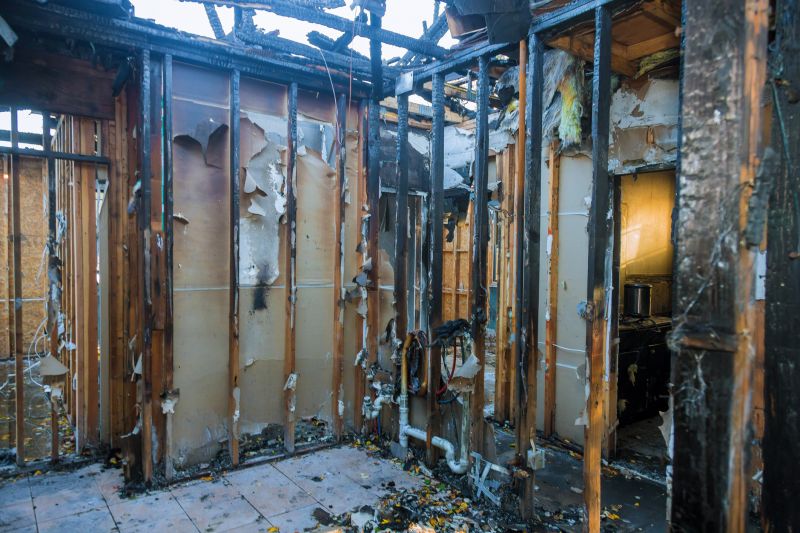Expert Picks For Fire Damage Restoration Products You Can Trust
Review trusted products favored by restoration professionals for restoring properties affected by fire incidents.
 Fire restoration products are essential tools and materials used to address the aftermath of fire damage in residential, commercial, and industrial settings. These products help mitigate further deterioration, remove soot and smoke residues, and restore the structural integrity of affected areas. Proper selection and application of fire restoration products can significantly influence the efficiency and effectiveness of the cleanup process. In Winston Salem, NC, homeowners and restoration professionals alike seek reliable solutions to manage fire damage safely and effectively.
Fire restoration products are essential tools and materials used to address the aftermath of fire damage in residential, commercial, and industrial settings. These products help mitigate further deterioration, remove soot and smoke residues, and restore the structural integrity of affected areas. Proper selection and application of fire restoration products can significantly influence the efficiency and effectiveness of the cleanup process. In Winston Salem, NC, homeowners and restoration professionals alike seek reliable solutions to manage fire damage safely and effectively.
Types of Products For Fire Restorations
Soot Removal Cleaners
Specialized solutions formulated to effectively lift soot from various surfaces without causing additional damage.
Odor Neutralizers
Products designed to eliminate persistent smoke odors from air and surfaces, improving indoor air quality.
Fire-Resistant Sealants
Materials used to seal cracks and joints, preventing further fire spread and containing damage.
Structural Cleaning Agents
Heavy-duty cleaners suitable for restoring structural elements like beams, walls, and floors affected by fire.
Air Purification Systems
Devices and filters that remove airborne smoke particles and improve indoor air during restoration.
Protective Gear
Personal protective equipment such as masks, gloves, and suits to ensure safety during restoration activities.
Fire-Resistant Paints and Coatings
Coatings applied to surfaces to enhance fire resistance and prevent future damage.
Water-Based Fire Extinguishing Agents
Solutions used to suppress residual flames and prevent reignition during cleanup.
Electrical Inspection Tools
Equipment to assess electrical systems for safety and damage before restoration work proceeds.
Structural Reinforcement Materials
Products that help reinforce weakened structures and ensure safety after fire damage.
Dehumidifiers and Drying Equipment
Tools to remove excess moisture and prevent mold growth during the restoration process.
Cleaning Cloths and Sponges
Absorbent and durable materials for manual cleaning and soot removal from surfaces.
Chemical Deodorizing Sprays
Sprays formulated to neutralize odors at the source, providing a fresher indoor environment.
Fire Damage Assessment Tools
Equipment used to evaluate the extent of damage and guide restoration strategies.
Thermal Imaging Cameras
Devices that detect hidden hotspots and assess heat damage in structures.
Popular Choices
Widely used for its effectiveness in reducing smoke odors from various surfaces.
Commonly chosen for its ability to clean charred surfaces and remove soot residues.
Popular for improving indoor air quality during and after restoration efforts.
Essential safety gear favored by professionals for respiratory protection during cleanup.
Often selected for sealing cracks and preventing fire spread in vulnerable areas.
Commonly used to control moisture levels and prevent mold during restoration.
Popular for quick odor elimination in affected indoor spaces.
Preferred by professionals for detailed soot removal from hard-to-reach areas.
Trending for assessing heat damage and ensuring thorough inspection.
Used frequently to evaluate damage extent and plan restoration steps.
Commonly employed to facilitate drying and improve air circulation during cleanup.
Popular for coating surfaces to enhance future fire resistance.
Favored for manual soot removal without the use of chemicals.
Used for long-term odor control in restored spaces.
Fire damage often leaves behind complex challenges such as charred surfaces, persistent odors, and compromised materials. Specialized cleaning agents, odor neutralizers, and protective equipment are critical components in tackling these issues. Additionally, products designed for soot removal and surface restoration help bring affected areas back to their pre-fire condition. It is important to choose products that are suitable for different surfaces and types of damage, ensuring comprehensive restoration without causing further harm.
The variety of fire restoration products available can be overwhelming, from heavy-duty cleaning solutions to advanced air purification systems. Selecting the right combination depends on the extent of damage, the type of materials involved, and safety considerations. Proper training and adherence to safety guidelines are also vital when handling these products, especially those that contain chemical agents. Investing in high-quality, versatile products can streamline the restoration process and lead to more satisfactory results for property owners in Winston Salem and beyond.
Key Buying Considerations
- Identify the specific type and extent of fire damage to select appropriate products.
- Ensure compatibility of cleaning agents with different surfaces such as wood, drywall, and metal.
- Prioritize products with proven effectiveness in soot and odor removal.
- Consider safety features and proper handling instructions for chemical-based products.
- Evaluate the drying and moisture control capabilities of restoration equipment.
- Opt for products that provide clear instructions to facilitate proper application.
- Assess the availability of protective gear to ensure safety during restoration activities.
- Look for versatile products that can address multiple issues like soot, odor, and structural damage.
- Check for certifications or standards that indicate product reliability and safety.
- Consider the size and quantity of products to meet project scope without unnecessary waste.
- Review user feedback and expert recommendations to gauge product performance.
- Determine whether specialized tools like thermal cameras are needed for thorough assessment.
- Balance cost with quality to ensure effective restoration without overspending.
- Be mindful of environmental conditions that may affect product performance, such as humidity.
- Plan for disposal of used or expired products in accordance with safety regulations.
